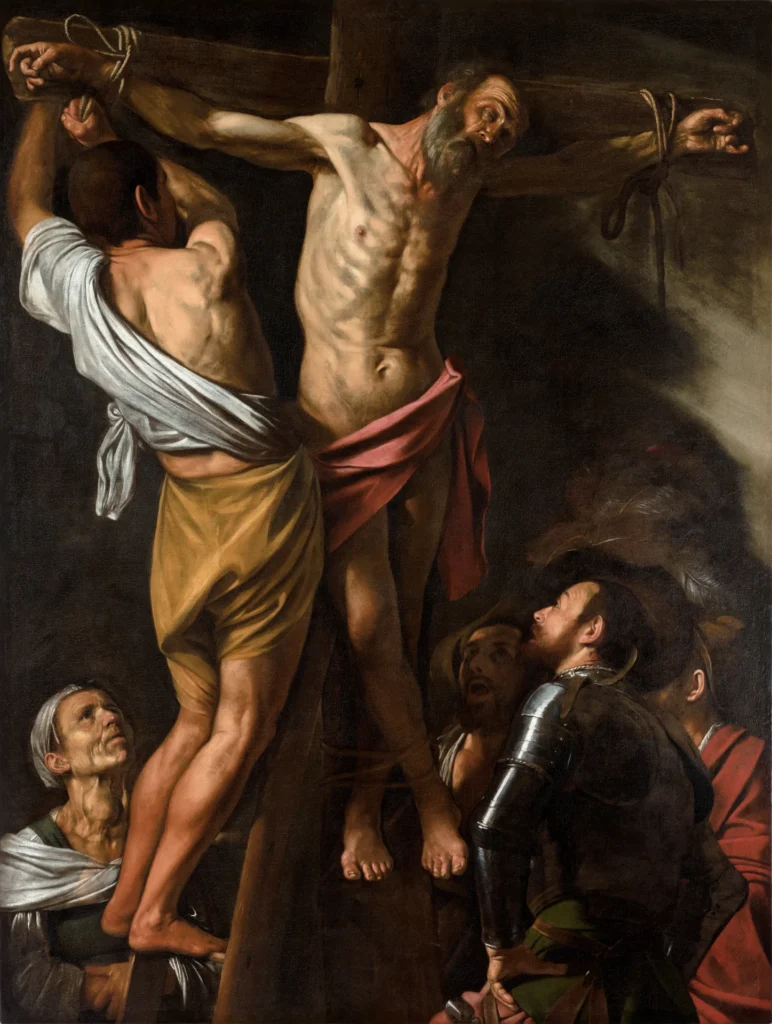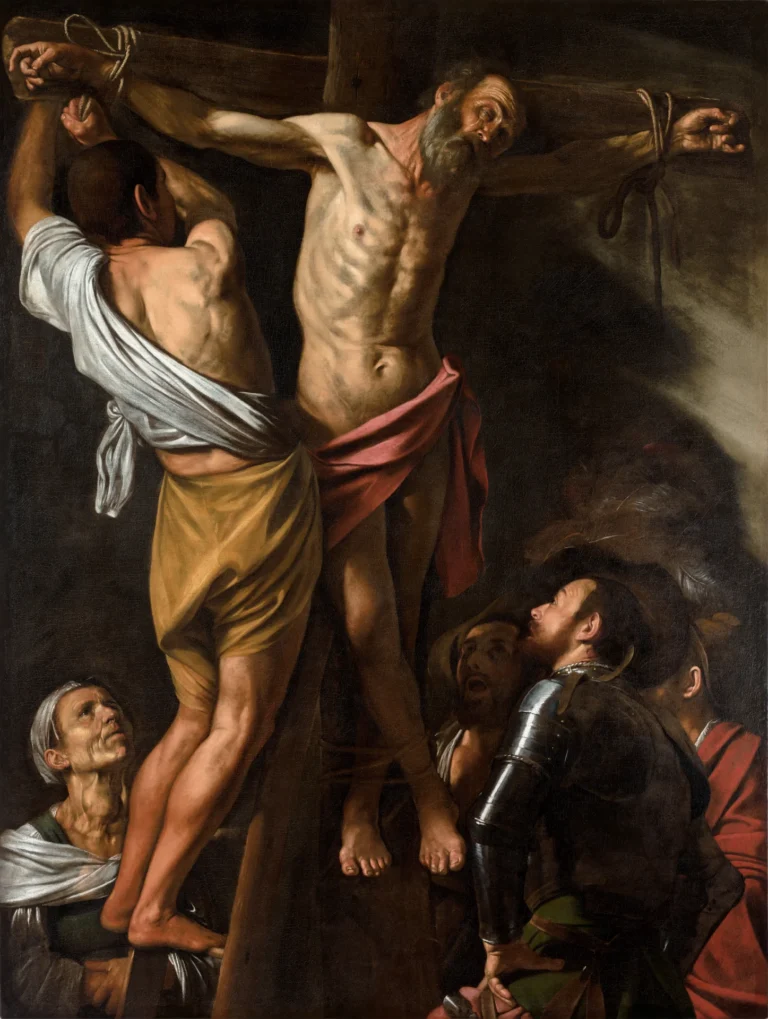The Crucifixion of Saint Andrew (1606–1607)
Painted by the renowned Italian artist Caravaggio between 1606 and 1607, the 'Crucifixion of Saint Andrew' captures the poignant moment of their crucifixion. Characterized by Caravaggio’s masterful use of chiaroscuro, the artwork focuses on the intimate suffering of Saint Andrew, rather than a grand public spectacle. The piece reflects deep emotional resonance and innovative artistic techniques prevalent during the Italian Baroque period, marking it as a significant cultural artifact.
1606 - 1607
About the Artwork
The 'Crucifixion of Saint Andrew' depicts the moment of Saint Andrew's martyrdom, showcasing his bound figure on a Latin cross, a departure from the traditional X-shaped cross associated with him. Commissioned by the Count of Benavente, this work intimately explores themes of faith, suffering, and divine presence. Caravaggio's use of light emphasizes the emotional gravity of the scene, contrasting with the surrounding figures, including executioners bewildered by divine intervention. The painting's historical journey adds depth, as it spent centuries lost from public view until its reemergence in the 20th century.
Did You Know
Traditionally, Saint Andrew is depicted on an X-shaped cross, known as Saint Andrew’s Cross, symbolizing his crucifixion as he felt unworthy to die on the same type of cross as Jesus.
Legend has it that during Saint Andrew’s execution, the executioners were unable to lower him from the cross due to a divine intervention, which allowed him to preach to the crowd before his death.
After its long-lost status post-17th century, the painting resurfaced in 1973, showcasing the mysterious journey and rediscovery that further amplified its historical significance.










